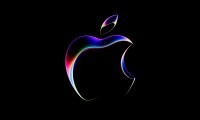
Apple’s Worldwide Developer Conference has long been a gathering of the Apple faithful, where programmers can get inside information on what Apple is planning for the future and how their programs can take advantage of new capabilities. Apple has now set the dates for its 2010 WWDC conference—June 7 through 11 in San Francisco—and, if the conference tracks are any indication, WWDC this year is going to be all about the iPhone and the iPad. It’s also jacked the cost of admission: sitting in on the closed door sessions will now cost mere mortals $1,599.
“This year’s WWDC offers developers in-depth sessions and hands-on working labs to learn more about iPhone OS 4, the world’s most advanced mobile operating system,” said Apple’s senior VP for iPhone software Scott Forstall, in a statement. “WWDC provides a unique opportunity for developers to work side-by-side with Apple engineers and interface designers to make their iPhone and iPad apps even better.”
The conference schedules are heavily packed with sessions focussing on iPhone OS 4.0 and iPad development. Although there are a handful of sessions focussing on Mac OS X, the almost complete lack of attention to Apple’s desktop operating system is a very strong signal that Apple will not be following up on Mac OS X 10.6 “Snow Leopard” anytime soon with a Mac OS X 10.7. Although Snow Leopard added some new features—and dropped support for older Macs—it was itself more of a clean-up-and-speed-up revision Mac OS X 10.5 “Leopard” than a whole new experience.
If history is any indicator—Apple unveiled the iPhone 3GS at last year’s conference—this years’ WWDC event may be where Apple formally unveils new iPhone hardware. If the probably-purloined iPhone prototype detailed by Gizmodo is any indication, the next iPhone may well have a very high-resolution display and a front-facing camera for video chat.



